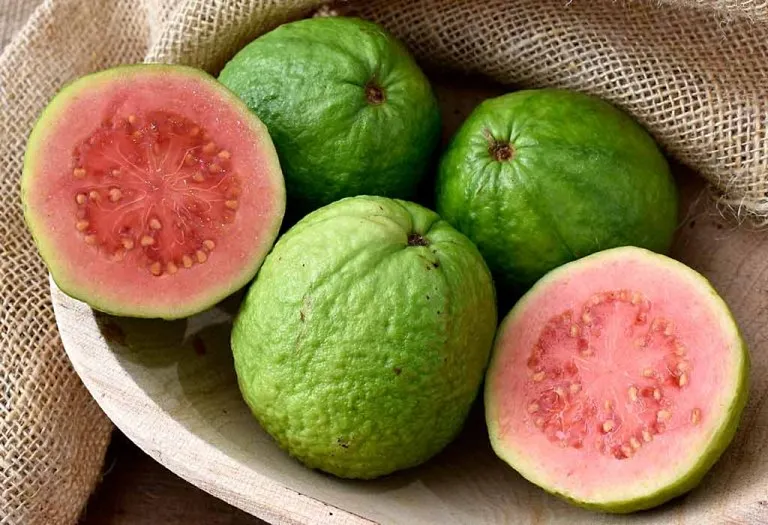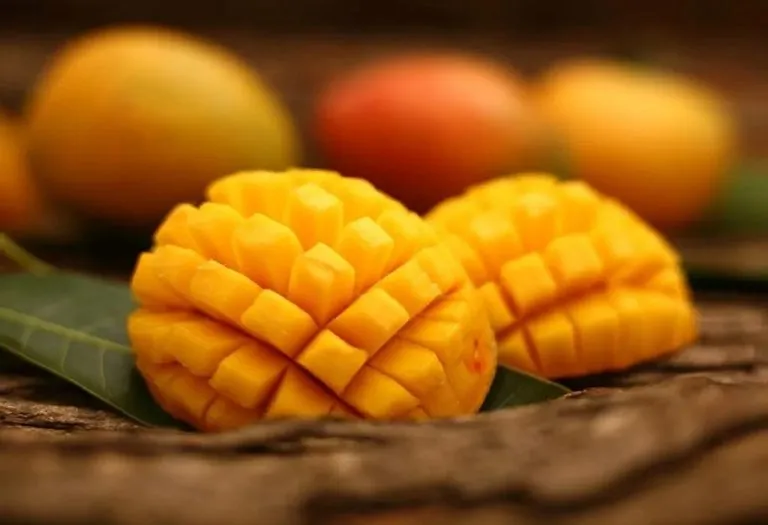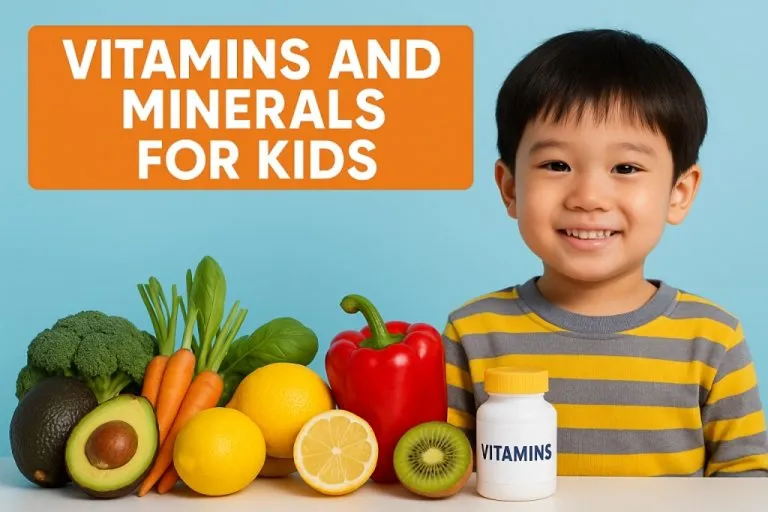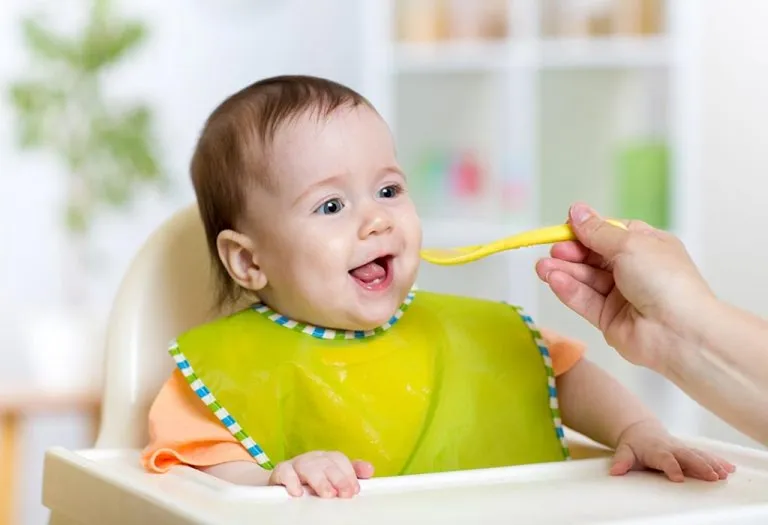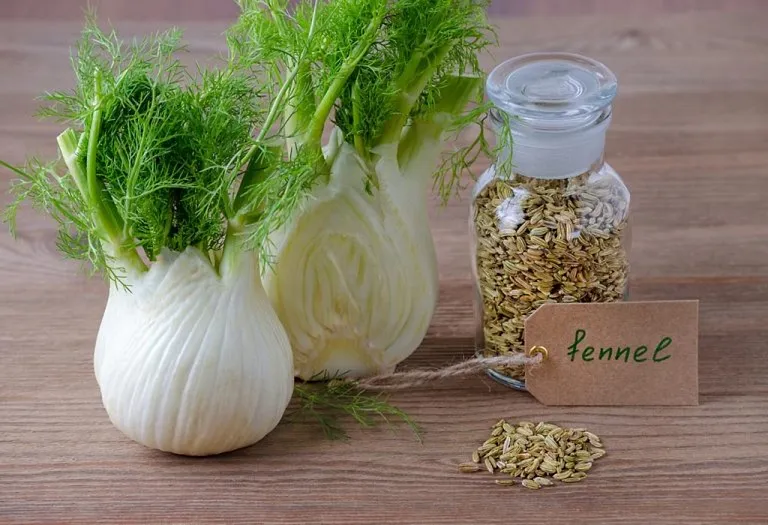Guava for Babies – Benefits and Recipes
There are many health benefits of guava for babies, from improving digestion to boosting immunity. Besides, it is a great addition as a tropical fruit that adds colour and flavour to smoothies or desserts. You can turn this vitamin-rich and edible fruit into a puree so that your baby can experience new flavours. Guavas are of different varieties and come in green, pink, or pure white colours. The fruit is oval or round in shape with a light yellow or light green skin and has edible seeds. Guava is a super fruit because of the amazing health benefits it offers, besides being unique in fragrance and flavour.
Should You Include Guava in Your Baby’s Diet?
Guava is safe for infants as per Tiny seeds are found in guava, which might be difficult to bite and hard to digest for babies. If the baby feels any discomfort while eating guavas, it is best to stop giving them the fruit for a while. After a few days, try and feed the fruit in order to let the baby get used to the taste.
At What Age Should You Introduce Guava to Babies?
You can introduce guava to babies around 4 months to 6 months. During this time, the baby will not get all the essential nutrients from only having a liquid diet during his growth. One of the best ways to start introducing solid foods to the baby is fruits. This is because fruits offer a variety of textures and flavours. Fruits are also rich in minerals and vitamins that are important for the baby’s development and growth.
Always start feeding the baby in small quantities and keep checking the baby for any side effects.
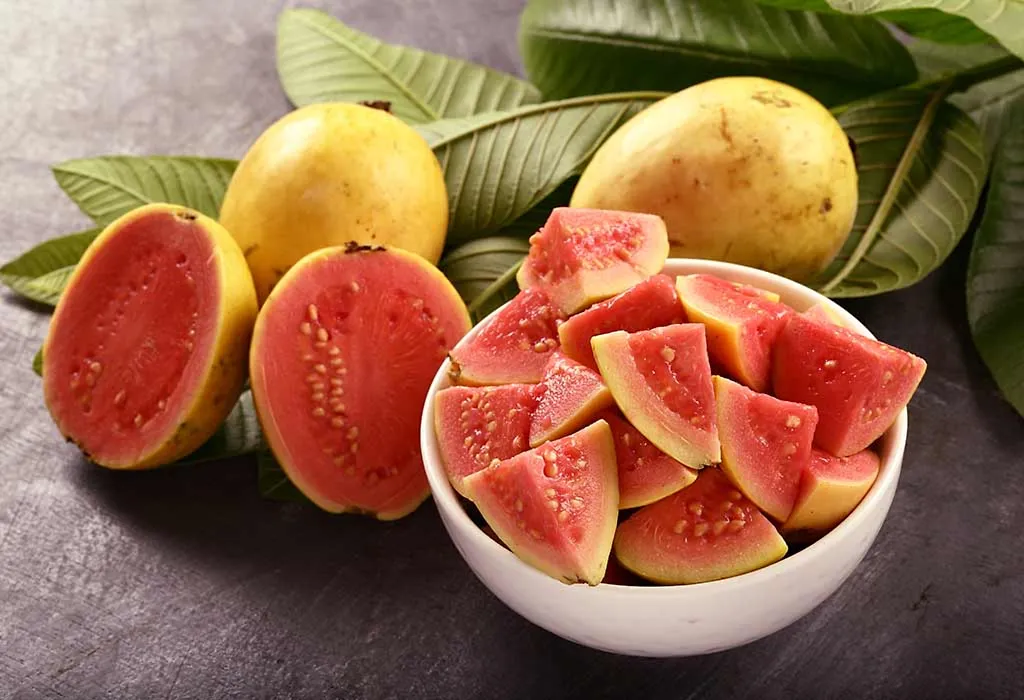
Nutritional Profile of Guava
The nutritional value given below is per 100g.
| Nutrition | Value |
| Calcium | 18 mg |
| Carbohydrate | 14.32 g |
| Copper | 0.23 mg |
| Energy | 68 kcal |
| Folate | 49 µg |
| Iron | 0.26 mg |
| Lycopene | 5204 µg |
| Magnesium | 22 mg |
| Manganese | 0.15 mg |
| Niacin | 1.084 mg |
| Phosphorus | 40 mg |
| Potassium | 417 mg |
| Protein | 2.55 g |
| Riboflavin | 0.04 mg |
| Selenium | 0.6 µg |
| Sodium | 2 mg |
| Sugars | 8.92 g |
| Thiamin | 0.067 mg |
| total dietary fibre | 5.4 g |
| Total lipid (fat) | 0.95 g |
| Total saturated Fatty acids | 0.272 g |
| Vitamin A | 31 µg |
| Vitamin B-6 | 0.11 mg |
| Vitamin C | 228.3 mg |
| Vitamin K | 2.6 µg |
| Water | 80.8 g |
| Zinc | 0.23 mg |
Reference: https://fdc.nal.usda.gov/fdc-app.html#/food-details/173044/nutrients
Benefits of Guava For Babies
Guava is considered to be a “superfood” because of the nutritional benefits it offers. Consuming guavas are very good for the body, and it is definitely a powerhouse.
1. Improves the Eyesight of the Baby
Consuming guavas regularly is very good for the baby’s eye health because it is loaded with carotenoids and vitamin A (1).
2. Fights Infection
Guavas are rich in vitamin C, and it helps the baby by relieving cold and congestion. Scurvy can also be prevented. This is a disease caused because of vitamin C deficiency, which can be very dangerous if left untreated.
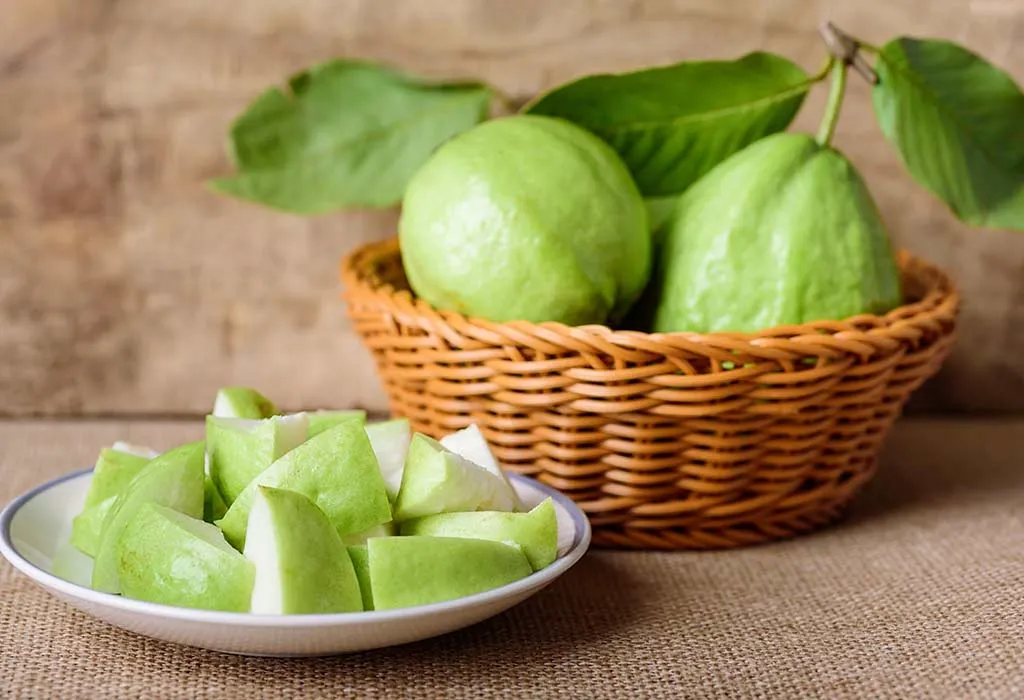
3. Cancer Prevention
Consuming guavas can help prevent the growth and development of cancer cells as it is loaded with antioxidants.
4. Increases Immunity
Guavas are loaded with vitamin C and contain 4 times the content of vitamin C present in oranges. Vitamin C will help the body by improving immunity and protecting the baby against pathogens and common infections (2).
5. Prevents Nervous Problems
This fruit consists of folic acid and many other vitamins that will help in the development of the nervous system of the baby and prevent neurological deformities.
6. Enhances Brain Development
This fruit is an amazing source of vitamin B3, vitamin B6, and vitamin K. It also has good amounts of thiamine, pantothenic acid, folate, and riboflavin. Therefore, guava is an incredible fruit that improves brain development in the baby.
7. Improves Digestion
It enhances the digestion process and keeps constipation at bay as this fruit is loaded with fibre (3).
Side-effects of Guava on Infants
While guava is generally considered a healthy fruit, introducing it to infants can sometimes lead to mild side effects. It’s important to monitor your baby’s reaction when offering new foods.
- Guava is rich in fibre, which can sometimes cause bloating or diarrhoea in infants if consumed in large quantities.
- Though rare, some babies may exhibit signs of an allergic reaction, such as rashes or swelling.
- The small seeds in guava can pose a choking risk, especially for younger infants who are still developing their chewing skills.
Things to Remember While Giving Guava to Babies
Guava can be a nutritious addition to your baby’s diet, but it’s important to introduce it carefully. Here are a few key points to keep in mind to ensure your baby enjoys guava safely (4).
- Always feed your baby fresh and ripe guava.
- Feed fresh puree to the baby and avoid freezing this puree.
- Before making the puree, it is better to boil the fruit first because it will then be easily digestible. Mask the fruit and sieve it to remove the seeds since guava seeds are harmful for babies.
- Do not expect the baby to consume the entire bowl at once. Start feeding a few spoons and then eventually increase the number of spoons.
- Restrict feeding this puree for a maximum of two days a week. Remember, over-consumption can bring diaper rashes as it is very acidic.
- Always check with the baby’s doctor before you start giving the baby any new food.
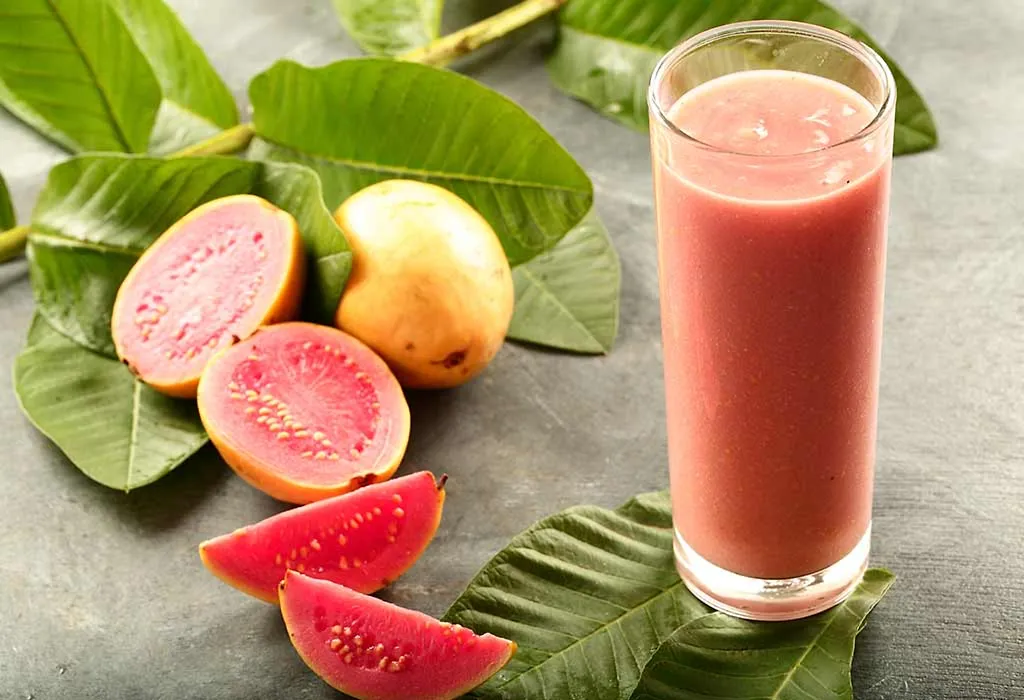
How to Prepare Guava for Baby-led Weaning
Guava can be introduced as part of baby-led weaning, but the preparation should vary depending on your baby’s age to ensure safety and ease of eating.
For 6 to 9 Months
- Remove the seeds and peel the guava.
- Offer soft, mashed guava or small, bite-sized pieces that your baby can easily grasp.
For 9 to 12 Months
- Slice the guava into thin wedges, removing seeds and skin to prevent choking.
- Encourage your baby to hold and explore the pieces while eating.
For 12 to 18 Months
- Offer slightly larger guava chunks or guava puree mixed with other fruits like bananas for variety.
- Ensure the guava is soft enough for chewing with developing teeth.
For 18 to 24 Months and Up
- Serve peeled guava with seeds removed in chunks or slices.
- You can also incorporate guava into smoothies or fruit salads to expand texture and flavour experiences.
Healthy Guava Recipes for Babies
You can check these recipes that include guava puree for babies.
1. Guava-Kiwi Puree
This delicious new flavour of puree made from guava for infants is something they will surely enjoy.
Ingredients
- A kiwi
- A guava
Method
- Wash the guava properly.
- Peel it and cut the guava into halves.
- Take a spoon and scoop every seed off.
- Slice it and boil the fruit in water for a few minutes.
- Put this in a blender and puree it thoroughly without leaving any lumps.
- Take half a kiwi. Peel it and grate it separately.
- To remove the kiwi seeds, put the pulp through a sieve.
- Mix the kiwi and guava puree together. Feed it to the baby.
2. Guava-Pear Delight
Try this guava baby food that is very delicious and easy to make.
Ingredients
- A pear
- A guava
Method
- Take half a guava and puree it.
- Take a quarter of a peer. Peel and grate it separately.
- Put the pulp of pear through a sieve to remove the seeds from it.
- Mix the pulp of both of these fruits and serve it to your baby.
FAQs
1. Can I give guava to my baby if they have a sensitive stomach?
Yes, but it’s best to start with small portions. Since guava is high in fiber, it may cause digestive discomfort like bloating or diarrhea in babies with sensitive stomachs. Introduce it slowly and observe how your baby reacts.
2. At what age can I introduce guava juice to my baby?
Guava juice can be offered to babies over 12 months of age. Ensure it is freshly made without added sugars and serve in small quantities to avoid any digestive upset.
3. Can I give guava to my baby during teething?
Yes, guava can be a soothing snack during teething. Chilled guava slices can help ease gum discomfort, but ensure the pieces are soft and seedless to prevent choking.
4. Is red or white guava better for babies?
Both red and white guava are nutritious, but red guava contains higher amounts of antioxidants like lycopene, which may offer additional health benefits for your baby. Either variety can be introduced as long as it’s ripe and properly prepared.
When introducing new foods, always keep in mind that it takes so much time and patience to help the baby develop a liking to the taste. But it is also important to introduce the baby to different tastes and food sources to protect his development and health.
References/Resources:
1. Mozaffarieh. M, Sacu. S, Wedrich. A; The role of the carotenoids, lutein and zeaxanthin, in protecting against age-related macular degeneration: A review based on controversial evidence (Nutrition Journal); National Libary of Medicine; https://www.ncbi.nlm.nih.gov/pmc/articles/PMC305368/; December 2003
2. Oliveira Dda S, Lobato AL, Ribeiro SM, Santana AM, Chaves JB, Pinheiro-Sant’Ana HM. Carotenoids and Vitamin C during Handling and Distribution of Guava (Psidium guajava L.), Mango (Mangifera indica L.), and Papaya (Carica papaya L.) at Commercial Restaurants (Journal of Agricultural and Food Chemistry); National Libary of Medicine; https://pubmed.ncbi.nlm.nih.gov/20441159/; May 2010
3. Jiménez-Escrig A, Rincón M, Pulido R, Saura-Calixto F. Guava fruit (Psidium guajava L.) as a new source of antioxidant dietary fiber (Journal of Agricultural and Food Chemistry); National Libary of Medicine; https://pubmed.ncbi.nlm.nih.gov/11714349/; November 2001
4. Guava (Firm); Solid Starts; https://solidstarts.com/foods/guava-firm/
5. E. Quiros-Sauceda et al.; Dietary fibre and phenolic compounds as functional ingredients: Interaction and possible effect after ingestion; Researchgate; https://www.researchgate.net/publication/261751306_Dietary_fiber_and_phenolic_compounds_as_functional_ingredients_Interaction_and_possible_effect_after_ingestion; April 2014
6. Daswani PG, Gholkar MS, Birdi TJ. Psidium guajava: A Single Plant for Multiple Health Problems of Rural Indian Population (Pharmacognosy Reviews); National Libary of Medicine; https://www.ncbi.nlm.nih.gov/pmc/articles/PMC5628524/; July-Dec 2017
7. Guavas, common, raw; FoodData Central; https://fdc.nal.usda.gov/fdc-app.html#/food-details/173044/nutrients
8. Olson CR, Mello CV. Significance of vitamin A to brain function, behaviour and learning (Molecular Nutrition & Food Research); National Libary of Medicine; https://www.ncbi.nlm.nih.gov/pmc/articles/PMC3169332/; April 2010
9. Mein. JR, Lian. F, Wang. XD; Biological activity of lycopene metabolites: implications for cancer prevention (Nutrition Reviews); National Libary of Medicine; https://www.ncbi.nlm.nih.gov/pmc/articles/PMC6824483/; December 2008
Oranges for Infants
Watermelon for Babies
Chikoo (Sapota) for Infants
Pineapple for Babies
Was This Article Helpful?
Parenting is a huge responsibility, for you as a caregiver, but also for us as a parenting content platform. We understand that and take our responsibility of creating credible content seriously. FirstCry Parenting articles are written and published only after extensive research using factually sound references to deliver quality content that is accurate, validated by experts, and completely reliable. To understand how we go about creating content that is credible, read our editorial policy here.





